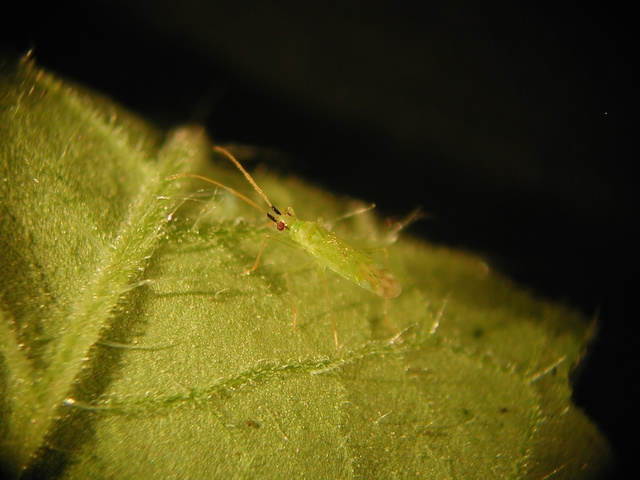
Features
Biocontrols
Inputs
Use parasitic wasps in tomato crops until Macrolophus is ready
May 21, 2015 By Dave Harrison
 Macrolophus pygmaeus BIOBEST
Macrolophus pygmaeus BIOBESTMay 21, 2015 – The predatory bug Macrolophus pygmaeus is popular in the fight against whitefly. But it takes a while before this beneficial is at full fighting strength. Introducing parasitic wasps can prevent problems due to early arrival of whitefly.
If you are familiar with using the predatory bug Macrolophus pygmaeus in the fight against whitefly, you know that sometimes it can take quite some time before the population of this beneficial reaches fighting strength. That’s also why Biobest advised growers to introduce Macrolophus as early as possible during spring.
But even if you’re early, whitefly can still arrive before the Macrolophus population is ready.
“We therefore advise you to use the Encarsia formosa wasp to fight early whitefly, as a sidekick of Macrolophus,” says Wesley Akkermans, sustainable crop management specialist at Biobest.
“This parasitic wasp is a good choice in tomato. It should be introduced in small amounts right now, just before growers expect the whitefly to arrive.”
It’s better if you introduce Encarsia even before you spot the first whitefly in your crops.
“These pests insects tend to be present before you detect them,” says Wesley.
“I’m afraid that if you apply the parasitic wasps only after spotting whitefly, the risk of running into difficulties is quite high.”
Wesley advises small amounts of Encarsia. “Minimally 0.5 wasps per running metre, every one or two weeks, should be sufficient.”
For more advice, contact your Biobest adviser or register on www.biobestgroup.com .
Print this page